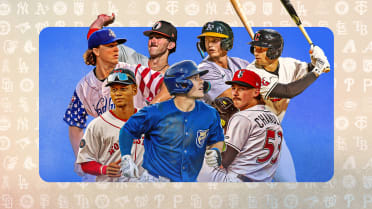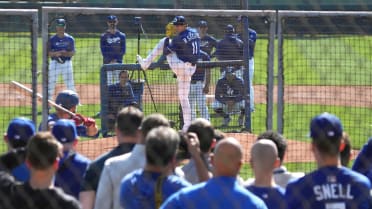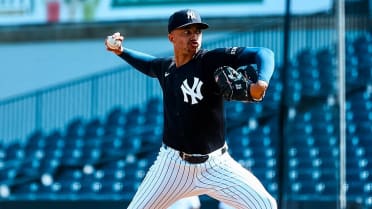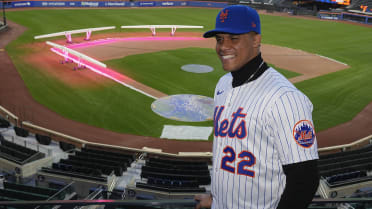D-backs-Phillies position-by-position breakdown
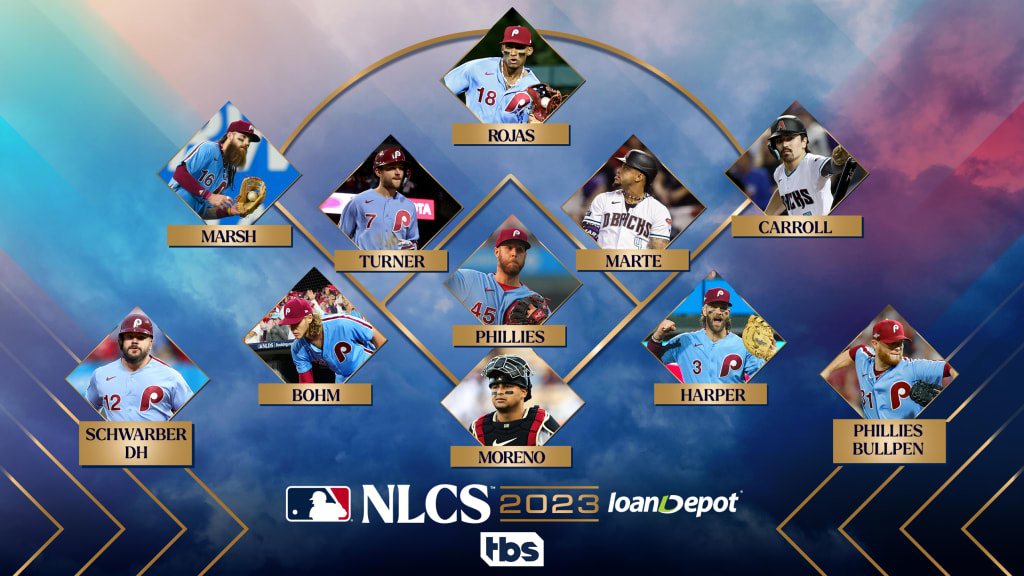
Maybe “Phillies vs. D-backs in the National League Championship Series” isn’t what you had on your bingo card when the season began, because you figured it would be some combination of Dodgers, Braves, Mets or Padres. (Remember them?) But that’s who we have, and it’s not hard to get excited about it, because just look who is here.
On one side: The defending NL champions, Team Vibes, probably the most likeable Philadelphia sports team in the history of the city, the team that’s been playing at a 100-win pace since the beginning of June.
On the other? The underdog, the newcomer, the team that didn’t even clinch the sixth and final NL playoff spot until the final week of the season, but who managed to not only slay a giant in what they did to the Dodgers, but straight up embarrassed them. The D-backs are young and fast, and anyone who doesn’t yet know the name “Corbin Carroll” is about to learn.
One of these clubs is headed to the World Series. Let’s break it down, position by position.
Catcher
We get started with a position that is shockingly close, given the fact that J.T. Realmuto was clearly considered the best catcher in the game for most of the past half-decade. He’s still excellent, as he’s shown in his very good postseason so far, but it’s worth noting that his 106 OPS+ this year was his weakest since back in 2015, and his once-elite defense took a bit of a step back this year.
Against most catchers, that would still be more than good enough. But in Gabriel Moreno, the D-backs have a catcher who is even better at throwing out basestealers, and his outstanding second-half hitting (.313/.383/.511) led into a postseason that’s featured three homers so far. Moreno isn’t anywhere near the star that Realmuto is -- at least not yet -- but so long as the right hand that he got banged up in Game 3 is healthy, he might just have a larger impact on the series.
Advantage: D-backs
First base
We almost went with the D-backs here. That’s how much we like and respect Christian Walker, the best defensive first baseman in the game -- by a lot -- who has quietly been mashing baseballs in the desert for the past two seasons, with his 69 homers representing the third most in baseball from a primary first baseman behind only Matt Olson and Pete Alonso. It was only a month ago that Walker was our choice on a list of “10 players whose 2023 seasons deserve more love,” and he’s driven in five runs in the postseason so far.
Walker is, to be clear, an extremely good player. The only problem is that the Phillies have a Hall of Famer at his peak, and while there’s no argument that Walker’s defense is superior, Bryce Harper hit better this season by a lot (146 OPS+ to Walker’s 123 OPS+), and he has a much longer track record of regular-season and postseason success, and he is Bryce Harper. This one is a lot closer than you might think, but it’s not close enough to tip it towards Arizona.
Advantage: Phillies
Second base
We are not just making these decisions based on postseason-to-date play, because it simply doesn’t work that way. That said, it’s hard to ignore that Arizona’s underrated Ketel Marte has two homers and a .984 OPS this month, on top of a strong 128 OPS+ (with 25 homers) in the regular season; in parts of seven years with the D-backs, he’s been more “up and down” than “consistent,” but he’s going to be remembered as one of the best position players in franchise history.
Bryson Stott, on Philadelphia's side, has a clear advantage with the glove, where he's rated as elite (+16 Outs Above Average) and Marte is rated as average (-1 OAA). But the batting edge is a larger one (Stott’s OPS+ was 104, and he’s been just OK at the plate in October), and if the D-backs are to advance, it’s going to have to be because Marte played a large role.
Advantage: D-backs
Shortstop
This is, in our opinion, the largest position player mismatch on the field. It’s true that Geraldo Perdomo made the All-Star team, and that he hit a big home run against the Dodgers, but it’s also true that his solid-enough first half (.787 OPS) collapsed into a poor second half (.619 OPS), while it was the exact opposite for Trea Turner (.687 OPS first half, then a .902 OPS second half, which then led to a massive-to-date 1.455 OPS postseason, with the team’s first four-hit postseason game). It's not like he's short on big moments this year in Chase Field, right?
While it’s true that Perdomo’s glove does rate better, Turner is also a perfect 34-for-34 stealing bases this year -- which makes his matchup against the elite arm of Moreno an absolutely fascinating one.
Advantage: Phillies
Third base
Evan Longoria has been at this for so long that the first time he played the Phillies in the playoffs, Ryan Howard, Jimmy Rollins and Chase Utley made up the heart of Philadelphia's infield. While Longoria wasn’t Arizona's primary third baseman this year -- bench player Emmanuel Rivera and since-traded Josh Rojas each saw more time at the hot corner than he did -- he’s started each postseason game so far.
But even though Alec Bohm wasn’t a world beater either in the regular season (108 OPS+) or postseason (.606 OPS), he’s done better than the 38-year-old Longoria in each. They’re actually similarly rated defensively, at least at third, because Bohm’s negative overall rating is mostly about his time at first base, as opposed to his competent play at third. There’s honestly not a great deal of separation here, so we’ll go with the younger player who has hit a little better.
Advantage: Phillies
Left field
Left field, of all positions, is where full-season stats will fail you, because they will include much of Kyle Schwarber’s work out here for the Phillies, but in the postseason, he’s been -- and likely will continue to be -- exclusively a DH, now that Harper has taken over first base. Instead, it’s now a platoon of righty Cristian Pache and lefty Brandon Marsh, with Marsh likely to see the majority of starts in the NLCS against Arizona's right-handed rotation.
Marsh is graded as an outstanding fielder, and he hit .292/.387/.477 against righties this year. While Pache’s bat still brings questions, his glove might even be better than Marsh’s, and the D-backs' Lourdes Gurriel Jr.'s solid season doesn't quite match up to the options the Phillies have here.
Advantage: Phillies
Center field
It’s possible, we suppose, that we’re putting too much on young Johan Rojas, who only made his Major League debut on July 15. Then again, Rojas hit reasonably well in his time in the Majors (111 OPS+), and that’s considerably better than Alek Thomas has (75 OPS+ in each of the past two seasons).
The counterpoint here is obvious: Rojas has had a mere single in the postseason so far, while Thomas did blast two home runs against the Dodgers. Yet while each rates as an excellent center fielder, Rojas racked up his +6 OAA in less than half of the playing time, an important consideration for a counting stat. It’s close, but Thomas’ longer track record of not hitting much and Rojas’ somewhat better defense tips it towards the Phillies for us.
Advantage: Phillies
Right field
We are, in fact, aware of the damage Nick Castellanos just put on the Braves in the NL Division Series, becoming the first player to have back-to-back postseason games with multiple home runs, which helps wash away the fact that he generally hadn’t done much with the bat in October as a Phillie, posting a .198/.244/.272 slash line across 21 postseason games with Philadelphia.
Still, Castellanos is a good player on one side, and Carroll -- the almost-certain NL Rookie of the Year -- is looking like a great player on the other side. Carroll outhit Castellanos this year (134 OPS+ to 112), the baserunning and defensive gaps are absolutely massive, and even in the playoffs this season, Carroll’s .412/.565/.824 is pretty spectacular.
Advantage: D-backs
Designated hitter
It’s a tremendous advantage for the Phillies to have the DH available, because we can completely ignore Schwarber’s defensive metrics; he hasn’t played the field in October so far, and likely will not going forward. He’s a bat-only player.
Though he hasn’t hit a home run yet this postseason, Schwarber did go deep six times last fall and, of course, he hit 47 blasts to go with a 122 OPS+ during the regular season. Arizona has mostly been going with midseason pickup Tommy Pham, who might be more of a complete player when we include his defense, but whose more good-than-great bat can’t compare to Schwarber’s.
Advantage: Phillies
Starting pitchers
Zac Gallen and Merrill Kelly aren’t as famous as Zack Wheeler and Aaron Nola, but over the course of the season, they performed almost identically well.
- The AZ two: 387.2 IP // 26% K // .668 OPS // 3.53 FIP
- The PHI two: 385.2 IP // 26% K // .674 OPS // 3.59 FIP
Not a whole lot of daylight here, is there? It’s true Nola, in particular, allowed more runs, but that’s partially about poor defense behind him and some midseason home run problems that largely subsided near the end of the year. Still, there’s not a whole lot here to separate the top two, so we won’t. But in a best-of-seven, it’s not just the top two, is it?
That's where the Phillies gain an edge, because Ranger Suárez continues to shine in the postseason (1.16 ERA in seven career games), and while the D-backs' Brandon Pfaadt did manage to pitch well in his start against the Dodgers, he was hit hard against the Brewers, and had a 5.72 ERA this season. If the teams needed a fourth starter, Philadelphia could turn to veteran righty Taijuan Walker or young lefty Cristopher Sánchez to start a likely bullpen game, while Arizona might not have a fourth option at all.
Advantage: Phillies
Relief pitchers
If fastball velocity matters -- and it does -- then of the final eight teams alive in the postseason, the Phillies had the best four-seam/sinker velocity in October (97.2 mph) and the D-backs the least (93.7 mph). Philadelphia's bullpen had the fourth-best strikeout rate in the game (28.7%) in September, while Arizona's had the 18th (22.3%). And while the team's September rosters aren’t exactly the same as October’s, it’s important to realize that whatever happened before Paul Sewald and Orion Kerkering were around doesn’t matter all that much right now.
Ultimately, from the D-backs' point of view, the bullpen is going to come down to two questions. First, can Kevin Ginkel, who had been a relatively nondescript bullpen arm in four previous seasons with Arizona, continue the high-end pitching he’s been providing since a June demotion to Triple-A? (He had a 2.13 ERA in 36 games after, and he has whiffed eight of the 17 batters he's faced in the postseason.) Second, can lefties Joe Mantiply and rookie Andrew Saalfrank neutralize Philadelphia lefties Harper, Schwarber and Stott?
Perhaps they can. But heading into the series, the Phillies' bullpen looks deeper -- and is clearly higher-octane.
Advantage: Phillies
Prediction
If we’ve learned anything this postseason, it’s this: Do not count anyone out, not even an 84-win Arizona team that “shouldn’t be here.” Guess what: The D-backs are here, because they took down two of the NL’s three division winners to do so. With two outstanding starting pitchers to go with two of the game’s best young stars in Carroll and Moreno, and two underrated veterans in Walker and Marte, they are going to put up a real fight.
Arizona will, however, in our opinion, come up just short. Philadelphia has absolutely everything going in the right direction at the right time, all cylinders firing. For the second time in two years, the Phillies are going to win the National League pennant.
Phillies in 6
Mike Petriello is a stats analyst for MLB.com, focusing on Statcast and Baseball Savant, and is also a contributor to MLB Network.

